YouTube Link: https://youtu.be/tsND-fmgHOI
Directed & Produced by — Ye Tsz Yu (3036075702)
“Alleyways in Asian metropoles can be spaces of refuge, vibrant communities, collective memory, mosaic-like identity formation, through traffic and shortcuts, and dense, conflict-laden interactions between the established residents and newcomers.” (Bultmann 225)
Description of the theme
Hong Kong is an international city with rapid development, which has a close relationship with an alleyway. As alleyway is the backstage of a city which supports development of that, I argue that alleyway is inconspicuous in the city due to the fast speed of the city — in terms of the living and working speed of people and the growth rate of the city. As a result, only a minority of people realized the significance of alleyway in this vibrant and lively city. Therefore, in the video, I tried to lead people to rethink the positioning of alleyway in the city, and the relation and interaction between them.
The video mainly focuses on two locations—Sheung Shui and Shek Tong Tsui because Sheung Shui is located in New Territories while Shek Tong Tsui is on Hong Kong Island. These two locations were chosen to compare the differences between two distinct, and Mong Kok (in Kowloon) was mentioned to prove the lively city with a rapid speed that resulted only a few people will discuss and observe the alleyway and think about its influence on us.
Since alleyway seems inconspicuous, based on the theme conducted, the usages of alleyway within the daily life of residents were mentioned. Mong Kok shows the opinion of Hong Kong that most of us will have, which is shopping in a crowded and colourful place, and a busy life that everything aims at speed. This also reflects the distinction in lifestyle between residents in New Territories, Kowloon and Hong Kong Island. Residents of New Territories will use bicycles for travelling and put them in alleyway because bicycles are convenient and affordable for them, hence, some bicycle repair shops are located near the alleyway which allows them to have more places to store bicycles temporarily. Compared to the other two distinct, in which people usually use the public transportation system, drive cars, or get on the boats for travelling, using bicycles seems like having a slower speed of living.
As mentioned in the video, residents will use alleyway to dry towels, park bicycles, put boxes for originally storing goods, and trash on trolleys/in rubbish bins. Shops not only located their back doors there but also located next to or at the alleyway. For repairing services or restaurants located in alleyway, although this phenomenon exists in both New Territories and Hong Kong Island, I claimed that Hong Kong Island has a higher density of that. These repair service shops support the demand for residents that help them to solve problems that potentially face, and restaurants provide an opportunity for them to have gatherings as a part of the community and also support the daily requirement—having meals.
Rather than the above usage, the alleyway is also a network that connects the community and provides essential needs, as wireless networks and water meters are installed at the alleyway. Wireless network allows people to communicate with each other using devices and water has essential usage that proves the importance of alleyway.
[Images took at Sheung Shui]
[Images took at Shek Tong Tsui]
Method of conducting the research
To conduct my research, I employed a systematic approach. Before selecting the locations, I extensively researched the characteristics of alleyways on the Internet and gathered opinions specific to Hong Kong. For research done on HKUL, although the number of articles on the situation of alleyways in Hong Kong was limited, I drew insights from studies on the development of other cities, which discuss the significance/positioning of alleyways, as well as observations on the disappearance or high concentration of alleyways in other cities like Shanghai and Tokyo.
Since I wanted to focus on Hong Kong’s situation, it was important to consider the opinions that locals have. I gathered opinions from news sources and online photography to gain a comprehensive understanding. As the video essay will show an overview of the situation as a contrast to a lively city that can help to lead watchers to rethink the importance of alleyway, I chose Sheung Shui and Shek Tong Tsui to prove the support and relationship between alleyway and locals.
As I was one of them who had not previously paid much attention to alleyways, I tried to incorporate the opinion which I previously had. I suggested that the reason for its inconspicuousness was due to the fast speed. Therefore, the images of Mong Kok, one of the most bustling areas in Kowloon, are presented to depict the vibrant aspects of the city. Compared to an alleyway, the lively city is more likely to be bright and many people traverse it; while the alleyway is dark—as is usually located between buildings, and only some of the people will go through. From the observation that I have by walking around the alleyway, even though some shops are located there, most of them only use the alleyway for back entrances or as storage spaces, which further contributes to their inconspicuous nature. As people may not think that is important or do not realize the support that we got from alleyway, I framed the theme and argument as—“Alleyway is inconspicuous in the city due to the fast speed of the city”.
Reflection
I have gained valuable experience in filming and photography through my work. Originally, I believed that exploring “the relationship between the city, alleyways, and architecture” would pose the greatest challenge, as there is limited research on Hong Kong’s alleyway. Therefore, I needed to have a well planning on location and conduct thorough observations to substantiate the inconspicuous nature of the alleyway. Since I wanted viewers to reconsider the positioning of the alleyway after they watch, I selected the locations effectively so that they could get my message.
Interestingly, upon completing the project, I discovered more than I had anticipated. I realized the importance of alleyway in the city— which differed from my initial opinion that alleyway must be vanishing in the future. While I remain uncertain about their future, I no longer consider their disappearance as an absolute necessity now, as they contribute to urban development. Moreover, I improved my skills in distinguishing different aspects through my footage and photographs, particularly in utilizing the contrast of darkness and light, a technique I acquired during the workshop.
Overall, I enjoyed the process of researching, planning and site visiting, and have gained great satisfaction. During the site visiting, exploring unfamiliar locations allowed me to observe interesting activities and interactions between residents and the architecture. I learned to capture footage and photographs from diverse angles, that can help present my arguments. Although I acknowledge that there is always room for improvement, I take pride in the valuable lessons I have learned through this experience.
Bibliography
Alawadi, Khaled, et al. “Reclaiming Alleyways to Improve Network Connectivity: Lessons from Dubai’s Neighborhoods.” Journal of Planning Education and Research, vol. 43, no. 4, 2023, pp. 917–39, https://doi.org/10.1177/0739456X20931907.
Bultmann, Daniel. “Asian Alleyways: An Urban Vernacular in Times of Globalization: Marie Gibert-Flutre and Heide Imai, Eds.” Azijske Študije (Spletna Izd.), vol. 9, no. 2, 2021, pp. 225–31, https://doi.org/10.4312/as.2021.9.2.225-231.
Byrne Bracken, G. (Gregory). The Shanghai Alleyway House : A Vanishing Urban Vernacular. Routledge, 2013.
Cummins, Anna, and Douglas Parkes. “Coolest Hidden Alleyways in Hong Kong.” Time Out Hong Kong, Time Out, 17 May 2017, www.timeout.com/hong-kong/things-to-do/hong-kongs-hidden-alleyways.
Fung, Kelly . “Small Space, Big Dreams.” Young Post, 16 Jan. 2022, www.scmp.com/yp/discover/lifestyle/article/3163407/tucked-alley-hong-kong-tiny-46-sq-ft-space-plays-big-part. Accessed 15 May 2024.
Gu, Yao, et al. “Adaptive Obstacle Avoidance Control Strategy for a Formation under a Narrow Alleyway Environment.” Proceedings of the Institution of Mechanical Engineers. Part I, Journal of Systems and Control Engineering, vol. 238, no. 2, 2024, pp. 344–58, https://doi.org/10.1177/09596518231188488.
“Hong Kong Alley.” Shutterstock, www.shutterstock.com/zh/search/hong-kong-alley. Accessed 15 May 2024.
Imai, Heide. “The Liminal Nature of Alleyways: Understanding the Alleyway Roji as a ‘Boundary’ between Past and Present.” Cities, vol. 34, 2013, pp. 58–66, https://doi.org/10.1016/j.cities.2012.01.008.
Kazandjian, Robert Armen. “Alleyway.” New Writing (Clevedon, England), vol. 6, no. 3, 2009, pp. 261–71, https://doi.org/10.1080/14790720903556197.
Lockshyn, Alexander. “Hong Kong Alleyways.” Medium, 2 Aug. 2017, medium.com/high-tech-low-life/hong-kong-alleyways-9aa5411b0aa.
“Pinterest.” Pinterest, www.pinterest.com/search/pins/?q=Hong%20Kong%20Alleyways&rs=typed. Accessed 15 May 2024.
Poon, Linda. “The Roots of Hong Kong’s Identity Are in Its Back Alleys.” Https://Www.bloomberg.com/News/Articles/2016-07-15/Two-Architects-Explore-The-Microeconomy-of-Hong-Kong-s-Alleyways, 16 July 2016, www.bloomberg.com/news/articles/2016-07-15/two-architects-explore-the-microeconomy-of-hong-kong-s-alleyways. Accessed 15 May 2024.
Wang, Luping, and Hui Wei. “Curved Alleyway Understanding Based on Monocular Vision in Street Scenes.” IEEE Transactions on Intelligent Transportation Systems, vol. 23, no. 7, 2022, pp. 8544–63, https://doi.org/10.1109/TITS.2021.3083572.
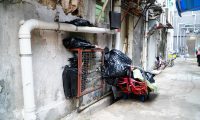
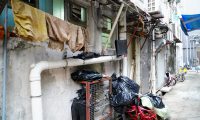
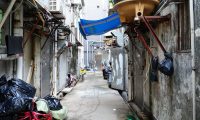
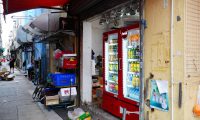
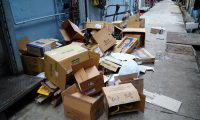
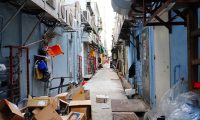
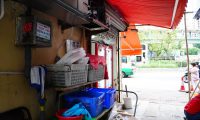



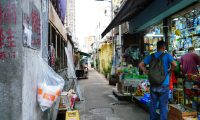
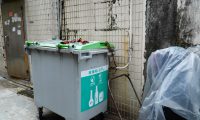
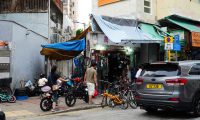
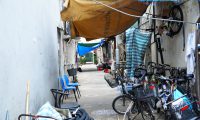
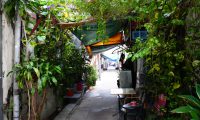
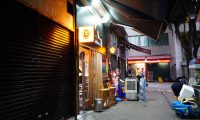
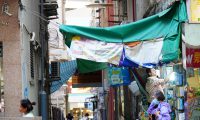
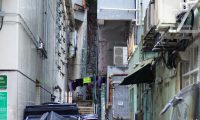

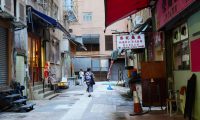


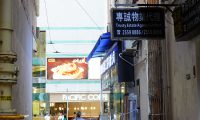


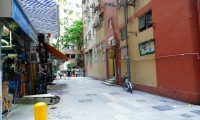
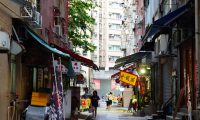

Ma Yin Lam Minnie 3036189008
I am inspired by your reflection and your effort is shown throughout the project. For the essay part, I think the content will be more thorough, detailed and convincing if you cited more sources. For example, a reliable and related sources can be included to support the argument when you mentioned “alleyway is inconspicuous in the city due to the fast speed of the city.” Also, I think alleyways is closely related to the street design and surrounding architecture but they seem not necessary in your essay. It will be much better if you can connect their relationship in your content. For example, you mentioned alleyways are inconspicuous in MongKok that may result from the street design. For the video part, most of the camera did not capture the interaction of people in alleyways. People are only pass by the alleyway; alleyways more likely are “transitional spaces” than “social spaces” in the video. I expected some interaction between residents would be shown, for example, they might smoke and gossip in the alleyway. Overall, I appreciate your effort in the work and thank you!